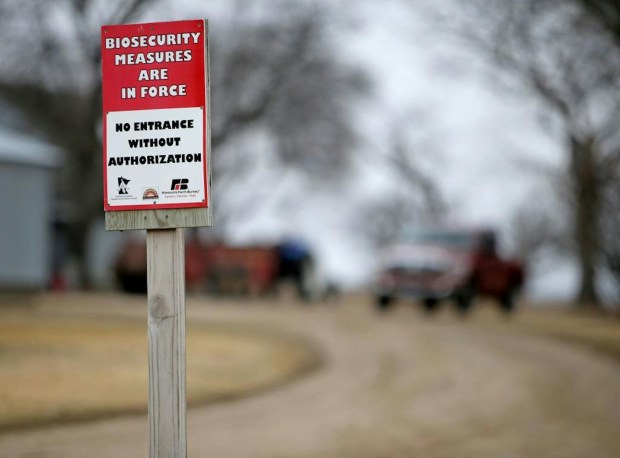Federal officials are cracking down on poultry operations looking for taxpayer relief from bird flu losses and will now require a biosecurity audit before insuring birds against future avian influenza outbreaks.
The new requirement from the U.S. Department of Agriculture is an effort to stamp out the nearly 3-year-old outbreak that has claimed 128 million birds nationwide. Infections continue in several places, driving up the cost of eggs and meat.
As the outbreak spreads, the public costs continue to rise. The biosecurity requirement is an attempt to rein in the cost of compensating growers, who are required to euthanize their entire flock when bird flu is detected. Producers are reimbursed for the market value of the birds they had to euthanize.
Of the 1,200 producers who have received federal indemnity payments, 67 have had at least two infections, the USDA said. There have been 18 facilities with three or more outbreaks nationally.
Those multiple-outbreak operations have been quite large, accounting for $365 million of $1.1 billion of indemnity payments to date, according to the USDA.
Biosecurity measures include quarantining new animals, disinfecting equipment and vehicles, and restricting access to farms.
“Biosecurity is proven to be our best weapon in fighting this virus, and this update will ensure that poultry producers who received indemnity for HPAI are taking measures to stop future introductions of the disease and avoiding actions that contribute to its spread,” USDA Chief Veterinary Officer Dr. Rosemary Sifford said in a news release.
Poultry operations that don’t comply with beefed-up biosecurity requirements “will not be eligible for indemnity payments if the premises experiences future infections within the same outbreak,” the USDA said.
As more chickens are put down, the price of eggs has shot up again after backing off record highs set in early 2023, according to federal data. A dozen eggs cost $3.65 on average in November, up 8.3% over October.
In Minnesota, nearly 100,000 turkeys were killed last month amid outbreaks in Fillmore, Chippewa and Stearns counties, according to the state. The state, which leads the nation in turkey production, has lost nearly 9 million birds.
In Iowa, several flocks, including one with 4 million birds, were infected in December, according to USDA figures.
The virus known as highly pathogenic avian influenza or H5N1 also has jumped to cattle but does not yet pose a widespread risk to people, health officials say. Experts are urging further measures to stop the spread before it mutates into a virus that poses a pandemic threat.
California officials have declared a state of emergency over the spread of bird flu, which is tearing through dairy cows in that state and causing sporadic illnesses in people in the U.S., the Associated Press reported.
The virus was detected for the first time in U.S. dairy cattle in March. More than 60 people in eight states have been infected, with mostly mild illnesses, according to the Centers for Disease Control and Prevention.
A patient was hospitalized in late December with a severe case of avian influenza in Louisiana. This was the first instance of severe illness linked to the virus in the United States, the CDC said.
While the current public health risk is low, the CDC says it is watching the situation carefully and working with states to monitor people with exposure to animals. The CDC recommends avoiding contact with surfaces that appear to be contaminated with animal feces, raw milk, litter or materials contaminated by birds or other animals with suspected or confirmed avian influenza virus infection.





